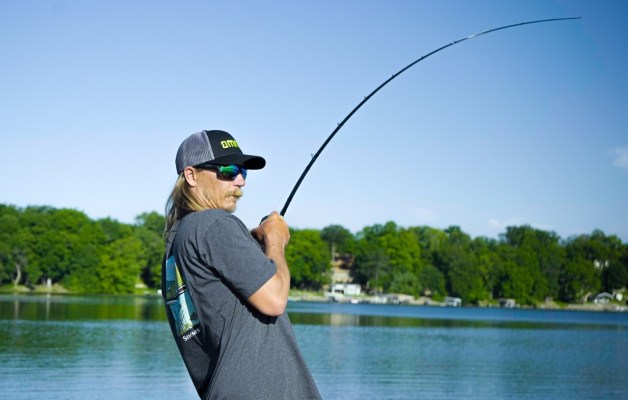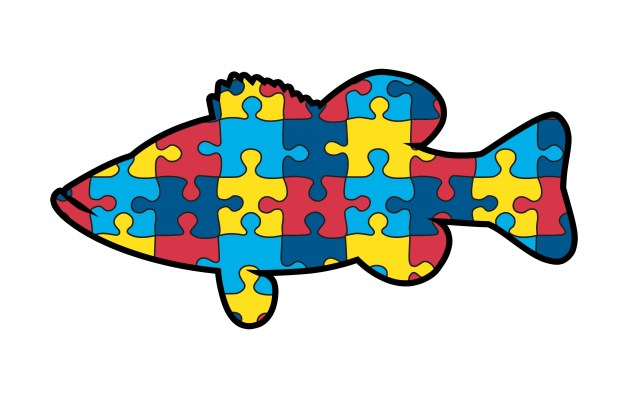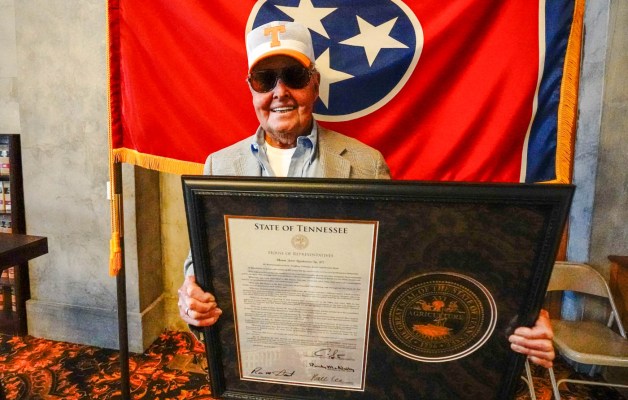You know, if you really wanted to find out who the best bass angler is, a tournament is a pretty good way to do it. You send the field out on the water under identical circumstances, fishing the same waters under the same rules and chasing the same fish.
Sure, some anglers have different and perhaps even superior equipment at their disposal. Some will soak up as much outside information as they possibly can while others will choose to avoid it. And some will break under the pressure of fishing for a payday while others will savor it.
All in all, though, it’s not a bad way to determine who’s the best.
Yes, you could make some refinements that would do an even better job. Length of the tournament, for example, is a big factor. The longer the tournament, the more luck you remove from the equation.
The creel limit is another big factor. The more bass you allow anglers to keep or otherwise weigh in, the greater the test. Just as a short (one day) tournament creates a greater chance that luck will factor in the win, so does a five bass limit open the door for luck more than a seven or 10 bass daily creel. Of course, conservation interests should be served here, so I doubt the five bass limit is going anywhere anytime soon.
Looking back at the 65 tournaments that have made up the Bassmaster Elite Series thus far, I can tell you that some have been won by anglers I never thought would hoist a trophy. Similarly, anglers I thought would have a couple of blue trophies by now are still looking for their first.
And when I think of Elite success, I think not only of tournament wins but also of long range success over the course of the trail. After all, just as a single day tournament can be won with a healthy dose of luck, a long record of performance will just about eliminate it as a factor.
Recently I was wondering which Elite angler averages bringing the biggest bass to the scales over the course of the Elite seasons. Last time, I shared a list of the best (and worst) individual Elite seasons for catching the heaviest average bass. Skeet Reese topped all anglers with an impressive 3.75-pound average in 2010.
That was a dominant year for the California pro, but which Elite angler would lead the way in career average? Would Kevin VanDam edge out Reese when all seven Elite years were combined?
Here are the weights of the average bass brought to the scales by the top 10 Elite anglers over the seven-year history of the Series:
Avg. Bass Angler
3.2495 Skeet Reese
3.1160 Kevin VanDam
3.0532 Edwin Evers
3.0350 Aaron Martens
3.0196 Terry Scroggins
3.0063 Kelly Jordon
2.9977 Todd Faircloth
2.9917 Steve Kennedy
2.9772 Michael Iaconelli
2.9540 Dean Rojas
Obviously, that’s a pretty impressive group. These are certainly among the best anglers in the Elite Series.
But those numbers are not quite what they appear to be. They’re skewed in favor of the anglers who have fished the Elite Series since the beginning, when weights were considerably higher than they’ve been over the past couple of years.
To get the final rankings right, I decided to make some adjustments. It wasn’t fair to exclude the anglers who came on the scene in the last three seasons, when bass weights have been down. In 2011, for example, no angler averaged a three pound fish for the entire season. The best anyone could muster was 2.875 (2 pounds, 14 ounces). Was that the anglers’ faults? Of course not. They were fishing just as well as they had before — maybe better since I believe their skills are constantly improving. The difference was in the quality of fisheries or the timing of the tournaments.
So I normalized the scores and adjusted everyone based on how well they performed against the season’s average bass.
Think of it like a park adjustment when comparing baseball stats. Just as it’s a lot easier to hit home runs in Fenway Park than in the old Astrodome, it was easier to catch big bass in 2008 than in 2011.
Here’s the new top 10 with revised numbers:
Avg. Pct Angler
1.1618 Skeet Reese
1.1444 Kevin VanDam
1.1155 Brandon Palaniuk
1.1057 Edwin Evers
1.0991 Ott DeFoe
1.0975 Terry Scroggins
1.0955 Aaron Martens
1.0917 David Walker
1.0829 Todd Faircloth
1.0828 Kelly Jordon
The new numbers are not in pounds. They’re a percentage of the average bass during the period that angler has fished. For example, Reese’s score of 1.1618 means that his average bass over the course of his Elite career weighed 1.1618 times the average Elite bass. VanDam is 14.44 percent ahead of the average.
Brandon Palaniuk’s numbers are accurate, but perhaps a little misleading. While it’s true that his average bass is 11.55 percent larger than the league average, he’s weighing in fewer bass than the average Elite angler. His bassing average (average number of bass weighed in each competition day) is 4.43 while the league average is 4.56. Of the top 10, he’s the only angler on the list whose bassing average is not considerably better than the norm. It may not seem like a lot, but it’s going to be tough for him to maintain such a big average bass size without catching more fish and having more opportunities to cull.
Ott DeFoe, on the other hand, is just behind Palaniuk in average bass size (almost 10 percent better than the norm), but his bassing average is a league best 4.96. That explains the big difference between DeFoe and Palaniuk in Toyota Tundra Bassmaster Angler of the Year standings over the past two years, where DeFoe has been clearly superior.
In compiling these statistics, I can’t help but analogize them to the baseball stats I used to follow and study. This was back in the days before the 1994 strike, when I was an Atlanta Braves season ticket holder and played lots of fantasy baseball. (We called it Rotisserie Baseball back then, and I dominated! LOL)
Now I think of bassing average like baseball’s batting average or perhaps on-base percentage. Average bass size is a little like slugging percentage. A big stat among baseball geeks is known as OPS — on-base plus slugging — and it’s pretty telling. It’s led me to think about ways to evaluate tournament performance at the Elite level.
A few weeks ago I evaluated Elite performance based on average finish in each Elite event. I liked the system at the time, but it has some flaws that I think I may have cleared up with this new stat.
I’ll tell you about it next time and show you some numbers that I think rank the Elite pros better than any other system I’ve found.





